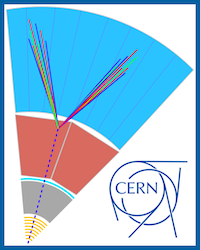CODEX-b, the COmpact DEtector for EXotics at LHCb, is a proposed particle detector for exotic long-lived particles (LLPs). These LLPs are potential candidates for dark sector portals, and so the observation of LLPs could unlock unexplored physics scenarios. Planned for installation near LHC interaction point 8, CODEX-b leverages fast resistive plate chambers (RPCs) with excellent temporal and...
New long-lived particles (LLPs) are a class of particles that are generically predicted in various theoretical extensions of the Standard Model such as those with Dark Matter candidates. The LHC has a detailed programme to search for LLPs produced at energies at the electroweak scale and above, which has mostly been focused on ‘prompt’ decays within the LHC experiments. In contrast, the ANUBIS...
The Forward Liquid Argon Experiment (FLArE) is a Liquid Argon Time Projection Chamber (LArTPC) based experiment, designed to detect collider neutrinos and search for dark matter at the Large Hadron Collider (LHC) at CERN. It will be located in the proposed Forward Physics Facility (FPF), 620 m from the ATLAS interaction point in the far-forward direction. The LArTPC technology offers excellent...
The MoEDAL experiment at IP8 on the LHC ring is the 7th LHC experiment and the first dedicated to the search for BSM physics. It took data at LHC’s Run-1&2. The MoEDAL detector is an unconventional and mostly passive detector dedicated to the search for Highly Ionizing Particle (HIP) avatars of new physics such as magnetic monopoles, Q-balls, dyon, microscopic black-hole remnants, and massive...
The BDF/SHiP experiment is a general purpose intensity-frontier experiment for the search of feebly interacting GeV-scale particles and to perform neutrino physics measurements at the HI-ECN3 (high-intensity) beam facility at the CERN SPS, operated in beam-dump mode. The CERN Research Board recently decided in favour of BDF/SHiP for the future physics programme of this facility. BDF/SHiP...
The NA64 fixed-target experiment at CERN explores the existence of feebly interacting particles from dark sectors. Employing secondary high-energy electron, positron, muon and hadron beams from the Super Proton Synchrotron, NA64 seeks signs of dark particle production within an active beam dump, measuring missing energy and displaced vertex events. Through its high-intensity data collection,...
